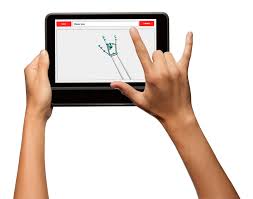 A San Francisco-based start-up has created a tablet that can translate sign language into speech, promising to act as a bridge between hearing and non-hearing people. The creators of the mobile device MotionSavvy, have installed technology in the tablet case that can detect motion, such as sign language gestures, before translating these into text.
A San Francisco-based start-up has created a tablet that can translate sign language into speech, promising to act as a bridge between hearing and non-hearing people. The creators of the mobile device MotionSavvy, have installed technology in the tablet case that can detect motion, such as sign language gestures, before translating these into text.
There are an estimated 360 million people around the world who suffer from a serious loss of hearing and communicate using sign language. Conversely, the number of hearing people who are able to communicate in this way is relatively low, meaning there are often significant barriers to understanding. In many cases, those with a hearing loss have to rely on companions translating sign language on their behalf so that they can communicate with others.
The mobile device, called UNI, consists of a tablet, specially designed smart case and a mobile app, and uses Leap Motion technology to capture the movement of hands, fingers and even joints with several built-in cameras and from distances of up to a foot. The software in the tablet compares the movements against a database of signs and then translates these into both text and speech. It does this so that both hearing and non-hearing people can understand and contribute to the conversation.
Like speech, sign language contains regional differences in the same way that there are differences in dialects and accents. The UNI has the ability to develop an understanding of the individual user’s sign language so that it can provide a personalised service. As users add gestures to the database, it is expected to greatly expand its library of signs. Currently, the UNI can translate American Sign Language, although if the device is a success it is likely that additional international sign languages will be added.
The CEO of the company, Ryan Hait-Campbell, has personal experience of the difficulties related to communicating between hearing and non-hearing people. He was born deaf while the other members of his family do not suffer from any hearing-related issues. It was this background that led Hait-Campbell to develop the technology behind the UNI. Moreover, the entire six-person team that is working on the device is also deaf.
The UNI is currently at the development stage with over 800 deaf people participating in beta testing. Expectations are that the device will go on sale in September 2015.

